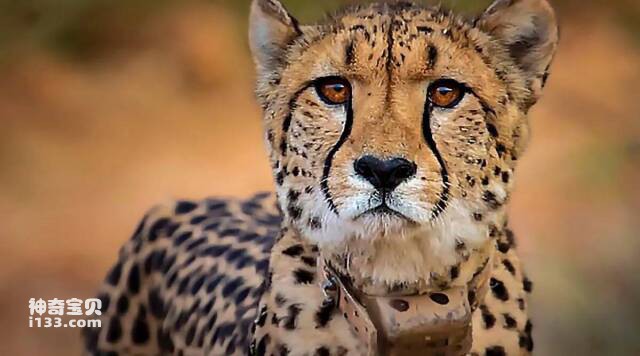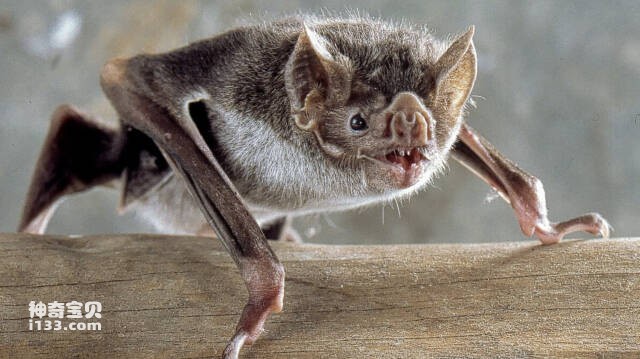Mammals are vertebrates with mammary glands that nurse their young to provide nutrition. Characteristics of mammals include hair, three middle ears, a single bone in the mandible (other vertebrates have multiple bones in the mandible), and a constant body temperature. Mammals are divided into many different subclasses, including marsupials, carnivores, dolphins and cetaceans, primates, and more. They play important roles in ecosystems, such as controlling population numbers and maintaining ecological balance. This article will take stock of the top ten mammals in the world. Which ones do you know?
The class Mammalia includes various types of mammals. The number of species in the class Mammalia may vary slightly depending on different classification methods and scholars' opinions, but is generally considered to have about 5,500 to 6,000 species. Our country is a country rich in mammal resources. Due to its vast territory and diverse terrain environment, it has many different types of mammals. According to the "Fauna of China", the number of mammal species in my country is about 540, including famous species such as black bears, Siberian tigers, South China tigers, golden monkeys, giant pandas, and red foxes. Due to the influence of human activities and other factors, the number of some species is gradually decreasing, and protection work needs to be taken seriously.

1. The world’s largest aquatic mammal (blue whale)
The largest aquatic mammals in the world are cetaceans, of which the Blue Whale is the largest species. The blue whale is a giant creature that lives in all oceans around the world. It can be more than 30 meters long and weighs 173 tons. They are the largest and heaviest animals known, even larger than the dinosaurs. In addition to blue whales, other whales are also very large, such as humpback whales, sperm whales, and killer whales. These giant aquatic mammals feed on plankton, obtaining nutrients by filtering the plankton in the water. Because they are large and require large amounts of food to sustain life, they play an important role in the marine ecosystem.

2. The world’s largest terrestrial mammal (African elephant)
The largest land mammal in the world is the African Elephant. Adult African Elephants-Are-Endangered.html">elephants are usually 3-4 meters tall and weigh 5-6 tons. Male African Elephants-Are-Endangered.html">elephants may be larger and heavier. They are social animals that live primarily in a variety of habitats including grasslands, forests, and deserts in Africa.
In addition to African Elephants-Are-Endangered.html">elephants, other large terrestrial mammals include giraffes, rhinos, and buffaloes. These animals are herbivores and require large amounts of food to sustain life. Many large terrestrial mammal populations are declining rapidly due to human hunting, habitat destruction, and other factors, and measures are needed to protect them.

3. The tallest mammal in the world (giraffe)
The tallest mammal in the world is the giraffe. Adult giraffes can reach a height of 5.5 meters, with most of the length coming from their long necks. Giraffes live in dry and open areas of Africa and feed on leaves and twigs.
Giraffes have very long necks, sometimes even longer than their bodies. This allows them to reach leaves and twigs that are inaccessible to other animals, thus avoiding competition between different species of animals. In addition, giraffe necks are also used as decoration, and male giraffes use their heads and necks to fight and threaten each other to show their superiority.

4. The most primitive mammal in the world (Platypus)
The most primitive mammals in the world are Monotremata, also known as oviparous mammals. Monotremes are a type of mammals that have lactation glands and secrete milk to feed their young. However, they are different from other mammals in that the mother does not have a placenta to nourish the fetus, but reproduces its offspring by laying eggs.
The monotremes include several species, including the platypus, arborescens, and echidna, and live in areas such as Australia and New Guinea. They have some characteristics of primitive mammals, such as: egg-laying reproduction mode, no real teeth but horny plates, excretion and reproductive systems combined into one organ, etc. Monotremes are small in number compared to other mammals and have been affected by factors such as habitat destruction, environmental change, and human activities. However, due to its important position in the evolution of mammals, it still attracts widespread attention from scientists.

5. The fastest mammal in the world (cheetah)
The fastest mammal in the world is the cheetah. Cheetahs are large carnivores that live in areas such as Africa and Iran. Their speeds can reach more than 110 kilometers per hour. This makes them the fastest land mammals, even faster than many small cars. Cheetahs usually run at high speeds to hunt down prey, and their body structure is also well suited for running.
Cheetahs have long, slender trunks, strong hind legs, and flexible bodies that allow them to accelerate quickly and maintain outstanding speeds in short periods of time. In addition, their eyes are also very special, with excellent vision and dark black spots, which help reduce vertigo and enhance visual stability when chasing prey. However, due to habitat destruction, human activities and other factors, cheetah numbers are gradually declining and are listed on the International Union for Conservation of Nature's endangered species list, requiring measures to protect them.

6. The smartest mammal in the world (chimpanzee)
The smartest mammals in the world are primates, and some species are thought to be more intelligent than others. Chimpanzees (Pan troglodytes) are the most intelligent mammals known after humans and are our closest relatives. They usually live in the tropical rainforest areas of Africa and are found in many countries in the Congo Basin and West Africa. Chimpanzees feed mainly on plants, but they also eat insects, small mammals, and birds.
Chimpanzees are social animals and usually live in groups of about 10 to 100 individuals, managed by a leader (usually a male). Chimpanzees have highly developed intelligence and social skills, and are able to use tools to obtain food, protect themselves, or attack other animals. They also have strong emotional and behavioral expressions and can display amazing creativity and adaptability, such as using leaves as rain gear and working together to capture food. However, chimpanzees currently face serious threats, including habitat destruction, forest development, trafficking and hunting. They are listed on the international endangered species list and measures need to be taken to protect their habitat and population.

7. The smallest mammal in the world (Papua pygmy bat)
The smallest mammal in the world is a bat, a species of the order Chiroptera called the Papua pygmy bat (Craseonycteris thonglongyai). Also known as "vampire bats," they are tiny mammals found only in Thailand and Myanmar. The length of the Papua pygmy bat is only 30-40 mm and its weight is less than two grams.
In addition to the Papuan pygmy bat, some other smaller mammals include pygmy rats, pygmy hippos, and pygmy gibbons. These animals typically live in environments such as forests, swamps, and grasslands in tropical areas, and their small size allows them to quickly adapt and survive in these habitats. Although these animals are very small, they play an important role in the ecosystem and provide a lot of valuable information and inspiration to humans.

8. The slowest mammal in the world (sloth)
The slowest mammal in the world is the sloth. Sloths are mammals that live in the tropical rainforests of Central and South America and are famous for their slow movements. Sloths move very slowly, crawling only a few meters per hour on average.
Sloths usually live in trees and feed on leaves and buds. Their body structure has also been adapted to life in the trees, with long, strong forearms and sharp claws that can easily climb tree trunks and grab leaves and other vegetation. However, their metabolic rates are low, so sloths need to conserve energy and exercise as little as possible to stay active. Although sloths are slow-moving but very unique and interesting, these cute animals have become one of the important attractions of local eco-tourism. At the same time, they are also facing the impact of factors such as forest destruction and human activities on their living environment.

9. The mammal with the strongest bite in the world (African lion)
The mammal with the strongest bite in the world is the African Lion. The African lion is a large cat that lives on the African continent and usually hunts as its main way to obtain food.
The African lion's bite is considered one of the most powerful of all mammals, with a bite force of approximately 600 pounds (approximately 272 kilograms). This allows them to easily crush hard bones and tendons and capture and kill large prey such as buffalo, giraffes, and zebras. However, the number of African lions in the wild is declining year by year, affected by factors such as human activities, habitat destruction and smuggling. Many agencies and organizations are working to protect African lions and their habitats and raise public awareness to support these efforts.

10. The mammal with the largest single litter in the world (Arctic fox)
The mammal with the largest single litter in the world is an animal called the Arctic Fox. Arctic foxes are small foxes that live in the Arctic. They typically mate each spring and then give birth to large numbers of pups after a gestation period. Arctic foxes can reportedly give birth to 12 to 20 pups in a single birth, the largest single litter of any mammal. These cubs are extremely fragile at birth and require their mother's care and protection to survive and grow into healthy adult Arctic foxes.
Although Arctic foxes are able to give birth to so many pups, their survival rate is not high as they face many threats, including climate change, habitat destruction, environmental pollution and hunting. However, due to its unique and striking breeding method, the Arctic fox has become one of the focuses of many wildlife enthusiasts and eco-tourists.
The list of the top ten mammals in the world is mainly recommended based on the size, ability and other relevant information of each existing mammal, and comprehensively refers to the relevant ranking lists on the Internet. The list is for reference only to help you understand what mammals are in the world. The most. If you have any questions, please leave a comment at the end.
animal tags:
We created this article in conjunction with AI technology, then made sure it was fact-checked and edited by a Animals Top editor.